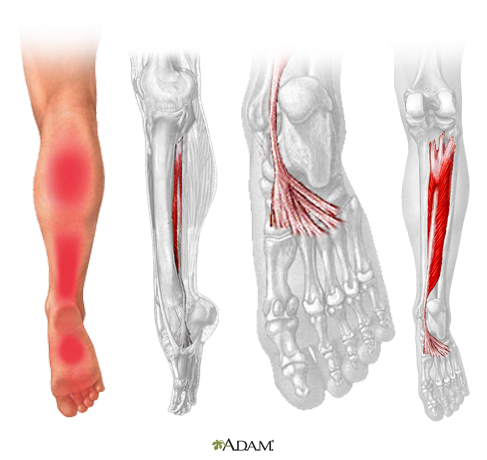Rebalancing the Tibialis Posterior
with Taum Sayers.
This online class offers uniquely efficient and effective techniques, protocols, and foundational information about returning the Tibialis Posterior muscle to pain-free functional balance.
Functional balance implies that our soft tissues are working together to support pain-free, healthy movement and function.
All movement includes orchestrating balance throughout soft tissue relationships while maintaining Equilibrium and Homeostasis. AKA Balance.
A simple example is the complex process of walking.
A symphony of movement.
Our body requires over 200 of our 600 muscles to take one step. Of those 200, many work in the background as compensating adapters to keep us upright as we walk. While all our weight is on the right foot, those background muscles adapt and counterbalance so we do not fall over.
Limping is an indication of imbalance.
The class progression:
The introduction serves as an overview of this unique form of therapeutic massage.
The technique videos guide you while you watch and practice the techniques on yourself or with a learning partner. The associated follow-along serves as a condensed refresher.
The class includes 4 sections:
Section 1:
The Corrective Technique for the Tibialis Posterior.
The clay video serves as a visual aid to facilitate your 'tactile' vision.
Section 2: The regional 'Background techniques.'
The video information in section 2 includes fundamental overviews and techniques for reducing regional tensions that often influence the state of the Tibialis Posterior.
Section 3: 'About Muscles.'
This section provides support for a deeper understanding of muscles.
The 'Take your Tools to Work' video information provides examples of positioning when applying techniques to clients.
Section 4: 'The Assignments.'
This section includes videos and relevant information to enhance a foundational understanding of muscles and their essential role in overall health, balance, and pain-free movement.
Once you understand the information presented, click on the exam near the bottom of the class page. When you pass with a 70% or higher score, you will receive your certificate, which includes your CE credits.
Note the contact and support links at the bottom of the class.
I hope this information serves you and those you serve.


A Holistic approach.
It serves to remember that we, as therapists, do not heal anything.
We recognize, respect, and support the body's amazing ability to heal itself.
Corrective Massage recognizes the importance of balanced relationships and interactions throughout the body's soft tissues*. These relationships include natural anatomical positions and functionally balanced movement.
Functional balance implies that our soft tissues are working harmoniously to support pain-free, healthy movement and function.
In Taum's world of Corrective Massage, considering all bodily movement as an orchestration of soft tissue relationships is a fundamental principle and starting point.
These foundational principles include familiarity with Equilibrium and Homeostasis. AKA Balance.
For example: Walking initially appears to be a simple activity. It actually involves a complex orchestration of numerous soft tissues.
A symphony of movement:
Our body requires over 200 of our 600 muscles to take one step. Of those 200, many serve as compensating adapters working in the background to keep us upright as we walk. While all our weight is on the right foot, those background muscles are adapting and counterbalancing so we do not fall over.
Each and every soft tissue plays a vital role in the body's ability to move and adapt to unbalanced tensions.
Our bodies can adapt to those tensions.
But only so far...
Limping is an example of crossing the adaptation line.
Pain serves as an alert that unbalanced tension has exceeded the body's ability to adapt, and corrective therapy is required.
The foundational focus of this unique therapy is to interpret the alert and then identify and correct the soft tissue tensions and imbalances that have created those alerts.
Corrective massage has repeatedly proven to be an efficient and effective method to reduce and relieve pain.
I hope this information serves you and those you serve.

*Muscles, tendons, ligaments, membranes, and viscera.
Click here to sign up for class.
Taum Sayers is approved by the National Certification Board for Therapeutic Massage and Bodywork (NCBTMB) as a continuing education provider.
Provider # 152386-00
